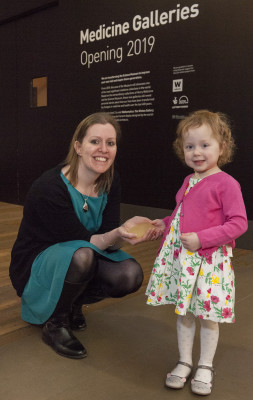Roger Highfield, Director of External Affairs, discusses a special event from the upcoming September Lates on 27 September that will explore how to build a virtual human, in partnership with the €5 million CompBioMed initiative. Tickets are free and available here.
One day your doctor will be able to recreate you in a computer so that a virtual version of you can be used to try out treatments, like a crash test dummy, guinea pig and trial volunteer all rolled into one. Your digital doppelgänger could breathe, blister and bleed. It could be dissected, probed and explored in unprecedented detail, helping to work out the treatments that work best for you.
Doctors will be able to use the virtual version of you to see how to treat a faulty, flapping heart valve, plan delicate brain surgery or select the HIV drug that has causes the least side effects for you. Surgeons could stroll around inside your organs, embark on a “fantastic voyage” into a single cell, rummage in your cellular power stations (mitochondria), or simply shuffle drug molecules around to see what happens when they encounter proteins in your body.
Virtual organs are already taking shape. Even back in the 1980’s all the activities – electrical, chemical and mechanical – involved in the contraction of a heart muscle cell were reasonably well understood and today there are virtual hearts beating within computers.
Now scientists can build 3-D computer models of an individual patient’s heart based on scans and information about the electrical conductivity of that tissue. They can then experiment on these virtual hearts by stimulating different spots to see how electrical signals ripple through the tissue, looking for an arrhythmia.
One of the recent acquisitions for the Science Museum’s Medicine Galleries was a 3D printed kidney used to plan a organ transplant.

Among those at the forefront of global efforts to create the virtual human is the CompBioMed consortium led by University College London. Medical simulations are carried out using supercomputers such as ARCHER, the UK national supercomputer, and SuperMUC at the Leibniz Supercomputing Centre, Germany.
As the Science Museum gears up for the opening of the Medicine Galleries in 2019, a special Lates event on 27 September 2017 will see leading-edge simulations of living processes.
The IMAX audience will also be able to talk to the scientists from the consortium who are attempting to recreate a human being in silico:
• Prof Peter Coveney (UCL) who leads the consortium, on simulating how drugs work in the body, for instance to treat cancer and Aids
• Prof Blanca Rodriguez (Oxford University), on virtual hearts
• Prof Marco Viceconti (Sheffield University), a key player in the Virtual Physiological Human initiative
• Prof Alfons Hoekstra (University of Amsterdam), on virtual blood vessels and more
Thanks to initiatives like CompBioMed, in years to come a doctor will be able to create a virtual model of a patient, customised with their personalised data, that can be used to make sense of test results. This technology will enable medical staff to explore the best way to carry out surgery and prescribe the best treatment or lifestyle for each patient.
Virtual copies of us will also help to provide a reliable answer to the simple question that doctors often struggle to answer: ‘What’s wrong with me?’
‘How to build a virtual human‘ will run from 19.30-20.30 in IMAX Theatre on 27 September, the event is free but ticketed. Tickets are free and available here.
Science Museum Lates is over 18s only, it runs from 18.45–22.00. Admission free although some events may require a ticket.